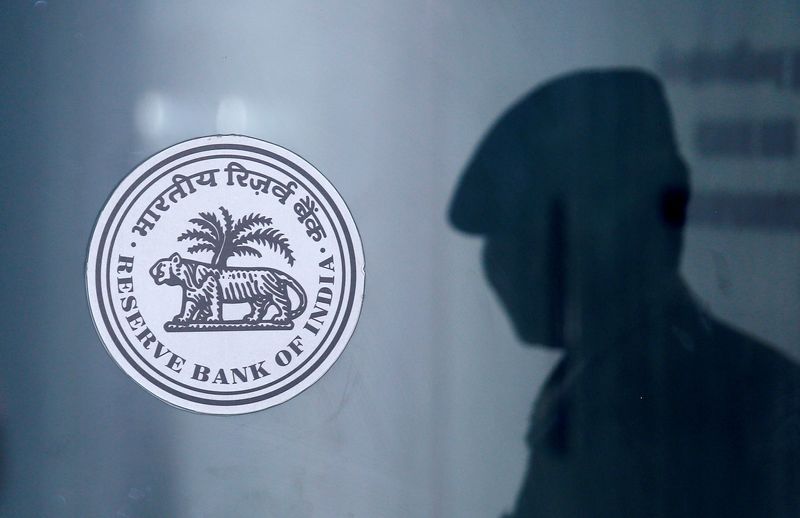By Swati Bhat
MUMBAI (Reuters) -The Reserve Bank of India's monetary policy committee (MPC) stuck to its accommodative policy stance to help the economy recover from the pits of the pandemic, keeping the key lending rate at record lows on Thursday.
As expected, the MPC held the lending rate, or the repo rate, at 4%. The RBI however, surprised some economists by also leaving the reverse repo rate, the key borrowing rate, unchanged at 3.35%.
The median forecast in a Reuters poll predicted the RBI would raise the reverse repo rate by 20 basis points to re-align it with short-term money market rates and narrow the corridor with the key lending rate.
The MPC voted unanimously to maintain the status quo on the repo rate and by a majority of 5-1 to retain the accommodative policy stance.
Continued policy support was warranted for a durable and broadbased recovery, RBI governor Shaktikanta Das said, noting an improving inflation outlook, prospects for economic growth and uncertainties posed by the fast spreading Omicron variant of COVID-19, and the global economy.
"Private consumption, the mainstay of domestic demand, continues to trail its pre-pandemic level. The persistent increase in international commodity prices, surge in volatility of global financial markets and global supply bottlenecks can exacerbate risks to the outlook," he said in his policy address.
"Overall, there is some loss of the momentum of near-term growth while global factors are turning adverse. Looking ahead, domestic growth drivers are gradually improving."
Elaborating on why the RBI had left the reverse repo rate unchanged, Das noted that the RBI had managed to achieve a rise in the effective reverse repo rate in the market to 3.87% as of Feb. 4 compared to 3.37% in end-August, in a very non-disruptive and seamless manner without adjusting the official rate.
The effective rate is based on the weighted average rate of the fixed rate reverse repo and the variable rate reverse repos of longer maturity.
India's 10-year benchmark bond yield fell 11 basis points to 6.69% by 0746 GMT, in reaction to the policy, while rupee weakened just slightly to 74.93 per dollar.
The NSE Nifty 50 index rose 0.75% to 17,594, while the S&P BSE Sensex was up 0.78% at 58,923.83.
BEHIND THE CURVE?
Real GDP growth is projected at 7.8% in 2022/23 compared to expected growth of 9.2% this year, Das said.
Retail inflation accelerated to a five-month high of 5.59% in December from a year earlier, while wholesale price-based inflation, a proxy for producer prices, eased marginally to 13.56%, but remained in double-digits for nine straight months.
Data due on Feb. 14 is expected to show retail inflation has risen to 6%, the upper-end of RBI's tolerance band.
Rising oil prices pose a major upside risk to inflation but it should peak in the current quarter and then moderate closer towards the 4% target in H2 of 2022/23 providing room for monetary policy to stay accommodative, Das said, insisting that the RBI's policy was not behind the curve.
Some analysts disagreed.

"The RBI surprised by not only doubling down on its now familiar orthodoxy of keeping rates and stance unchanged, but also expressed a very dovish outlook for inflation for FY23, forecasting it at 4.5%," said Aurodeep Nandi, economist at Nomura. "This suggests that the RBI is likely to remain behind the curve, until macro circumstances warrant a shift of gears."
The central bank has slashed the repo rate by a total of 115 basis points (bps) since March 2020 to soften the blow from the coronavirus pandemic and tough containment measures. The rate is now 250 bps below its level at the beginning of 2019, when the easing cycle began.